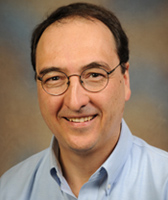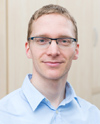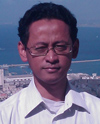Applying Biology to Technology: Researchers Gather to Share New Discoveries in Synthetic Biology at SEED 2015
by Shannon Fischer
In June, synthetic biologists and bioengineers from as near as MIT and as far as the National University of Singapore gathered at the Park Plaza Hotel in Boston, Massachusetts for the second annual Synthetic Biology, Engineering, Evolution, and Design (SEED) Conference to share their latest research.
SEED is fast becoming a notable technical conference dedicated to synthetic biology and its growing applications and technologies. In its second year, SEED 2015 brought together more than 400 participants from academia, government, and industry to share and collaborate on advancements in this emerging field. Its topics ranged from agriculture and cancer fighting to nanomaterials, DNA circuits, and in one talk, better blue jeans. CRISPR/Cas9, a breakthrough new genome editor that allows for rapid, specific, and multi-function changes (for more information, also see video profile in this issue), appeared throughout the conference in posters and talks.
Jennifer Doudna at the University of California, Berkeley, one of the primary discoverers of CRISPR’s function, spoke on Friday morning. Since her lab’s early work with the tool, Doudna has begun to focus on the mechanisms of the genetic editor—how it finds targeted genes and interacts with DNA strands to open and edit them. “What we’d love to do eventually is figure out how this protein operates inside living cells,” she said.
The microbiome was featured frequently as well at SEED, with signs of its shift from that of a largely observed phenomenon to one that can be manipulated and engineered. Conference co-chair Pamela Silver from Harvard Medical School delivered a talk detailing work from her lab on engineering biological gut bacteria sensors to detect and respond to inflammation, and implanting circadian clocks into non-circadian bacteria—a first step in designing therapies that could function in tandem with the natural rhythms of human and microbiomic biology.
In related talks later in the event, University of California, San Francisco microbiologist Michael Fischbach also dove into the human microbiome to showcase how his team has used bioinformatics to uncover an almost entirely unknown family of microbiota that happen to include powerful new antibiotics, and ETH Zurich’s Martin Fussenegger presented biological networks designed to sense circulating molecules like glucose or lipids and release insulin and appetite suppressants in return.
One of the biggest themes of the event focused on the design-build-test process common in biological manipulation, where researchers test, adjust, and retest the molecules and systems they’re creating. This is typically an extremely time and labor intensive process, requiring large amounts of computation and modeling. Many speakers at SEED focused on how to improve such operations.
One speaker presented work harnessing machine learning to predict the effects of different gene variations; another spoke of using models to predict the input-output behavior of a genetic complex. Steve Shih, a post-doc at the Joint BioEnergy Institute and Sandia National Labs in California, showcased a new type of programmable, automated microfluidic device that could accelerate the plasmid-making process (videos below).
Steve Shih’s novel microfluidics device can be programmed to automatically create multiple DNA plasmids on demand. A proof-of-concept study used the tool to assemble two sets of 16 plasmid combinations, and researchers hope to expand the platform.
Video 1 is an automated series showing dispensing droplets containing DNA parts (BCD and Promoter) and actuated to the mixing region. This is further merged with a dispensed droplet containing a vector backbone. A droplet of ligase (or master mix) is further mixed downstream for Golden Gate or Gibson DNA assembly. This combined droplet is suctioned into the channel where it is incubated and taken up by bacteria or yeast cells.
Video 2 is a computer user-specified sequence showing the droplet movement is displayed simultaneously.
Shih is a post-doc at the Joint BioEnergy Institute and Sandia National Labs in California. He previously studied electrical engineering and chemistry at the University of Toronto and the University of Ottawa.
Several others presented recent discoveries within cell-free metabolic engineering—using the inner components of cells without the complications of cells’ walls or genetic regulation to manufacture products.
Speaking of the process of manipulating biology, Alicia Jackson, then of DARPA, noted that “things still move at the pace of humans.” Other fields, she explained, have overcome that through automation and miniaturization, and biology needs to do the same. DARPA, Jackson said, will play its role in this with its recently established Biological Technologies Office, which will in part focus on bringing an industrial engineering mindset to synthetic biology. “I think there’s a huge opportunity here to open up a whole new realm,” she predicted, “where we’re opening up from the petrochemical age, into the biology age.”
Synthetic biology has had its successes in the world so far in medicine, industry, and environment, but as it moves into the future, it will need to become faster, smarter, and much more efficient. The work presented at this year’s SEED showcases the early foundation that has been emerging for exactly such a shift.
Next year, SEED will be held in Chicago. More information on the conference can be found here.
Shannon Fischer is a freelance science writer living in Boston, Massachusetts.







 Richard M. Murray is currently the Thomas E. and Doris Everhart Professor of Control & Dynamical Systems and Bioengineering at Caltech. Murray's research is in the application of feedback and control to networked systems, with applications in biology and autonomy.
Richard M. Murray is currently the Thomas E. and Doris Everhart Professor of Control & Dynamical Systems and Bioengineering at Caltech. Murray's research is in the application of feedback and control to networked systems, with applications in biology and autonomy.  Steffen Waldherr is an assistant professor for theory of complex networks at the Otto-von-Guericke-University, Magdeburg, Germany. His research interests focus on systems engineering methods for biomolecular networks and cell-biological systems, including modeling, uncertainty and robustness analysis, optimization, non-linear dynamics, and cell populations models.
Steffen Waldherr is an assistant professor for theory of complex networks at the Otto-von-Guericke-University, Magdeburg, Germany. His research interests focus on systems engineering methods for biomolecular networks and cell-biological systems, including modeling, uncertainty and robustness analysis, optimization, non-linear dynamics, and cell populations models.  Bayu Jayawardhana is a university reader in the Faculty of Mathematics and Natural Sciences at University of Groningen, Netherlands. His research interests are on the analysis of nonlinear systems, mechatronics, systems, and synthetic biology.
Bayu Jayawardhana is a university reader in the Faculty of Mathematics and Natural Sciences at University of Groningen, Netherlands. His research interests are on the analysis of nonlinear systems, mechatronics, systems, and synthetic biology.